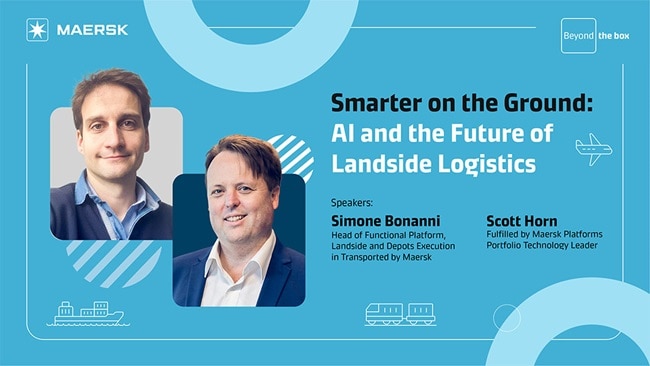Summary
Discover the innovations of Digital Twin technology in supply chain management and logistics. In this article, we will explore:
- What is Digital Twin Technology?
- Innovations and Research Driving Digital Twins
- Applications in Supply Chains
- Applications for Integrated Logistics Providers
- Benefits of Digital Twin Technology
- Challenges and Considerations for Companies
What is Digital Twin Technology?
Imagine a vast warehouse filled with rows of shelves stacked high with goods, and cargo trucks constantly arriving and departing. Amidst this hustle and bustle, Digital Twin technology is quietly revolutionising operations. By creating a virtual replica of the warehouse and cargo systems, Digital Twins enable real-time monitoring, predictive maintenance, and enhanced decision-making. This innovative approach allows for the optimisation of inventory management, efficient routing of cargo, and proactive identification of potential issues. Some would say it is the future of supply chain management; others would say that its future is now.
Digital Twin technology involves creating a virtual replica of a physical object, system, or process. The concept, which originated in the field of engineering and manufacturing, including during the NASA Apollo space missions of the 1960s, has now expanded to various industries, including supply chain management and logistics.
In this article, we explore Digital Twin technology as it relates to physical assets, such as containers, warehouses, ports, and trucks, allowing for real-time monitoring and predictive maintenance in logistics. This technology helps identify bottlenecks, inefficiencies, and potential risks, leading to better planning and resource allocation. By combining Digital Twins with Artificial Intelligence and predictive analytics, supply chains can become more resilient and flexible, ultimately improving efficiency and reducing costs.
Innovations and Research Driving Digital Twins
Ranked among the top thirty trends in The Logistics Trend Map, Digital Twins drive major operational changes across multiple functional areas, with technology demanding targeted strategies and resource allocation to enable real-time optimisation. In fact, the global market is projected to grow by 30–40% annually, reaching USD 125–150 billion by 2032.
The opportunities outlined in the study are clear. Digital Twin Simulations can enable significant cost savings, operational efficiency, and climate resilience. They improve dispatch planning, asset utilisation, and customer confidence in pricing and service reliability through advanced simulations. The challenges to scaling Digital Twin simulation technology are impacted by external factors like geopolitical disruptions or new digital regulatory standards. Moreover, transitioning from manual to automated systems, including integrating diverse data sources, requires significant investments in technology and training.
Early adopters in logistics are experimenting with supply chain optimisation, though applications remain limited compared to the use of Digital Twins in manufacturing. While The Logistics Trend Map found limited data on C-Suite mentions or startups related to Digital Twins (thus suggesting the trend remains in its early adoption phase with cautious business engagement), research and academia show stronger involvement. There is a fair amount of patent activity (350+, including 60 groundbreaking within the timeframe of 2019-2023) and approximately 500 scientific publications to indicate a growing, yet focused, interest in the topic.
Patents play a crucial role in the adoption and development of Digital Twin technology for several reasons, including:
- Protection of Intellectual Property (IP): Patents protect the innovative aspects of Digital Twin technology, such as unique algorithms, data integration methods, and simulation techniques.
- Encouraging Innovation: By securing patents, companies can ensure that their investments in developing new technologies are safeguarded. This encourages continuous innovation and advancement in the technology.
- Competitive Advantage: Patents provide a competitive edge by granting exclusive rights to use and commercialise specific aspects of Digital Twin technology. This can help companies differentiate themselves in the market and establish leadership in the field.
- Standardisation and Interoperability: Patents can drive the development of standardised protocols and interoperability between different Digital Twin systems. This is essential for seamless integration across various platforms and industries, ensuring that different systems can work together effectively.
- Legal Protection and Dispute Resolution: Patents provide legal protection against infringement, allowing companies to act if their technology is used without permission. This helps maintain the integrity of the market and ensures that innovators are rewarded for their contributions.
These factors collectively help shape the adoption of Digital Twin technology.
Applications in Supply Chains
Digital Twin technology offers clear benefits for supply chains by enhancing visibility, predictive capabilities, and collaboration.
- End-to-End Visibility and Traceability: By creating a digital replica of the entire supply chain, companies can monitor and track every aspect of their operations in real-time. This includes inventory levels, transportation routes, and warehouse activities. Such visibility enables supply chain managers to identify bottlenecks, predict disruptions, and make informed decisions to optimise performance.
- Predictive Analytics and Scenario Planning: One of the most powerful features of Digital Twin technology is its ability to run simulations and compute thousands of what-if scenarios. This capability allows supply chain managers to anticipate potential issues and test different strategies before implementing them in the real world. For example, a company can simulate the impact of a sudden increase in demand or a disruption in transportation routes and develop contingency plans accordingly.
- Enhanced Collaboration and Communication: Digital Twins facilitate better collaboration and communication among different stakeholders in the supply chain. By providing a shared digital platform, all parties involved—from suppliers to manufacturers to logistics providers—can access real-time data and insights. This collaborative approach ensures that everyone is on the same page, leading to more efficient and coordinated operations.
Applications for Integrated Logistics Providers
Digital Twin technology offers significant advantages for integrated logistics providers, enhancing efficiency, optimising operations, and improving customer satisfaction.
- Optimising Transportation Routes: For logistics providers, optimising transportation routes is crucial to reducing costs and improving efficiency. Digital Twin technology, combined with Internet of Things (IoT) tracking devices, allows for the simulation of various routing scenarios, taking into account factors such as traffic conditions, weather, and delivery schedules. By analysing these simulations and real-time data from IoT devices, logistics providers can identify the most efficient routes and make adjustments in real-time.
- Improving Warehouse Operations: Digital Twins (also known as virtual twins) can also be used to optimise warehouse operations. By creating a digital replica of the warehouse, logistics providers can monitor inventory levels, track the movement of goods, and identify areas for improvement. For instance, they can simulate different layouts and workflows to determine the most efficient setup, ultimately reducing operational costs and improving productivity.
- Enhancing Customer Experience: Customer satisfaction is a key priority for logistics providers. Digital Twin technology enables providers to offer more accurate delivery estimates, track shipments in real-time, and proactively address any issues that may arise. By providing customers with greater transparency and reliability, logistics providers can enhance the overall customer experience and build stronger relationships.
Benefits of Digital Twin Technology
Digital Twin technology offers a multitude of advantages by enhancing efficiency, decision-making, resilience, and sustainability for supply chains and logistics providers.
- Increased Efficiency: By providing real-time insights and enabling predictive analytics, Digital Twin models help supply chains and logistics providers operate more efficiently. Companies can optimise their processes, reduce waste, and make better use of resources, ultimately leading to cost savings and improved performance.
- Enhanced Decision-Making: Digital Twins empower supply chain managers and logistics providers to make more informed decisions. With access to accurate and up-to-date data, they can identify trends, predict disruptions, and develop effective strategies. This data-driven approach ensures that decisions are based on solid evidence rather than intuition.
- Greater Resilience: In an era of increasing uncertainty, resilience is more important than ever. Digital Twin technology enables companies to anticipate and respond to disruptions more effectively. By simulating various scenarios and developing contingency plans, supply chains and logistics providers can minimise the impact of unexpected events and maintain continuity.
- Sustainability: Digital Twin technology also contributes to sustainability efforts by optimising transportation routes, reducing waste, and improving resource utilisation.
Challenges and Considerations for Companies
While Digital Twin technology offers numerous benefits, its implementation is not without challenges. Companies must invest in the necessary infrastructure, including sensors, Internet of Things (IoT) devices, and data analytics tools. By partnering with an integrated logistics provider already working with Digital Twin technology, companies can benefit from this expertise.
Indeed, the market is accelerating for this technology. New groups are developing to help support this acceleration, including the Digital Twin Consortium which works globally to help drive adoption and best practices. And in the United Kingdom, Digital Twin Centres are being developed to deliver cases to demonstrate the potential of digital twins in transforming the maritime, aerospace and defence sectors.
Companies must ensure their workforce is trained to use and interpret the data generated by Digital Twins. Data security and privacy are also critical considerations, as this technology involves the collection and processing of vast amounts of sensitive information. As a recent Science Direct publication points out, ethics, regulations, privacy, security, and industrial relations need to adapt to physical and social realms being mirrored and changed in real-time by a digital replica. In this article by Deloitte and o9 Solutions, case studies and recommendations for implementing Digital Twin technology are explored. A key recommendation is for companies to "think big, start small, and act fast" in their implementation approach.
Overcoming these Digital Twins obstacles requires a strategic approach, robust data management strategies, advanced analytical capabilities, skilled personnel, and a clear roadmap for seamless integration of Digital Twins within the overall supply chain operations. Addressing these challenges is crucial for unlocking the full potential of this transformative technology in enhancing supply chain visibility, agility, and optimisation.
Conclusion
Digital Twin technology is poised to transform supply chains and integrated logistics providers, offering unprecedented visibility, predictive capabilities, and efficiency. By leveraging this innovative technology and working with integrated logistics providers involved in this space, companies can optimise their operations, enhance decision making, and build more resilient and sustainable supply chains. As technology continues to evolve, its adoption is likely to become increasingly widespread, driving significant improvements across the industry.
Be ready to use advanced technology to go all the way! Discover more with Maersk Logistics Insights, and learn about the Maersk Innovation Center. For more logistics trends and insights, read and download The Logistics Trend Map.
How can you digitise your supply chains?
As e-commerce offering is getting higher, so are customers' expectations for a unified, easier experience. This can be achieved through the digitalisation of logistics which can simplify, connect, and optimise supply chains from end to end.
Learn more about how Maersk can help with the digitalisation of logistics.
Sign up to The Logistics Pulse newsletter
You did it, welcome onboard!
We're sorry, but there was a problem sending your contact request.
Please review the form fields and ensure all required information is provided correctly. If the issue persists, please contact our support team for further assistance.
Sign up to The Logistics Pulse newsletter
Receive our insights directly in your mailbox by signing up through this form and enter a world of truly integrated logistics. Get inspired by our selection of articles that help you navigate supply chains, understand industry trends, and shape your logistics strategy. You can unsubscribe anytime.
I agree to receive logistics related news and marketing updates by email, phone, messaging services (e.g. WhatsApp) and other digital platforms, including but not limited to social media (e.g., LinkedIn) from A. P. Moller-Maersk and its affiliated companies (see latest company overview). I understand that I can opt out of such Maersk communications at any time by clicking the unsubscribe link. To see how we use your personal data, please read our Privacy Notification.
By completing this form, you confirm that you agree to the use of your personal data by Maersk as described in our Privacy Notification.













